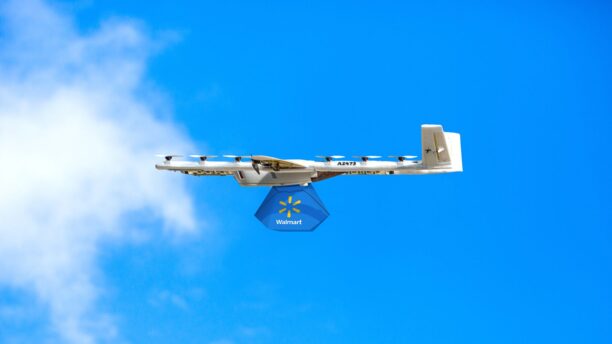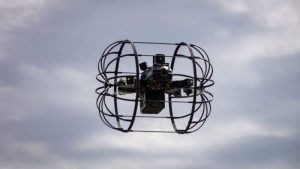FAA’s Progress on BVLOS Drone Operations: Achievements, Gaps, and the Future of Scalable Flight
For those immersed in the world of drones—whether as enthusiasts, tech pioneers, or simply intrigued by the rise of unmanned aircrafts—2025 marks a pivotal year. The Federal Aviation Administration (FAA) has achieved significant progress in establishing rules for drones operating beyond visual line of sight (BVLOS), a key component for revolutionary drone capabilities. Consider the potential for medical deliveries to far-off communities, autonomous inspections of extensive power lines, and the ambitious aspirations of fleets for package deliveries.
However, transitioning to truly scalable, routine BVLOS operations poses challenges, with several regulatory and technological obstacles remaining. Let’s explore the current landscape, the implications, and potential developments.
What Is BVLOS and Why Is It a Game-Changer?
**BVLOS** refers to drone missions that extend beyond the direct line of sight of the operator. This capability allows drones to:
- Cover extensive areas in a single flight
- Conduct autonomous, long-duration missions
- Support business models, such as persistent surveillance, infrastructure inspections, and delivery services, that aren’t feasible with visual line-of-sight flights
This explains the drone industry’s strong advocacy for these new regulations. Historically, most operations needed individually acquired waivers, which were costly and limited the scalability.
FAA’s Progress: Hard-Won Milestones and Industry Breakthroughs
Dramatic Expansion in BVLOS Approvals
The figures highlight an impressive trajectory:
- There has been a leap in **BVLOS approvals from 1,229 in 2020 to 26,870 in 2023**. This upsurge is attributed to waivers, air carrier operating certificates, and regulatory exemptions.
- By October 2024, the FAA granted **190 BVLOS waivers** to 134 diverse operators, ranging from academic institutions to energy conglomerates.
Productive Partnerships and Programs
Initiatives like **BEYOND**, **Partnership for Safety Plan (PSP)**, and **Integration Partnership Agreement (IPA)** have fueled innovation:
- **BEYOND** participants logged over 66,000 flights; 44,000 were BVLOS.
- PSP/IPA programs conducted around 86,000 flights, with BVLOS comprising 94% of them.
Notable real-world applications include:
- **UPS Flight Forward**’s medical deliveries in Florida
- **FedEx**’s drone-aided aircraft inspections in Memphis
Firsts in the Sky: Multiple Operators, Same Airspace
In July 2024, the FAA approved **multiple commercial drone operators to fly BVLOS within the same North Texas airspace**—a U.S. industry first. This was facilitated by cutting-edge Unmanned Aircraft System Traffic Management (UTM) services, indicating the potential for large-scale, routine drone operations.
The Road to Part 108: From Piecemeal to Scalable
Why Do We Need New Rules?
Previously, BVLOS flights depended on cumbersome, individual FAA waivers, stifling innovation and business expansion. This piecemeal approach made scaling solutions or leveraging past approvals difficult for drone companies.
The Promise of Part 108
**Part 108** represents the FAA’s anticipated regulatory reform aimed at normalizing and expanding BVLOS operations.
**Key features expected from Part 108 include:**
- Transitioning from waivers to routine, rules-based approvals
- A dual-path system: operational permits for low-risk missions, and complete operational certificates for extensive operations like delivery networks
- New equipment and operational standards, such as:
- Detect-and-avoid sensors
- Certified communication systems
- Potential type certification for specific drones
- Integration with managed airspace, including “drone corridors” and coordination with air traffic control
- Modified right-of-way protocols (wherein drones could take precedence over certain manned aircraft in specific corridors)
Tight Deadlines and Executive Orders
In 2025, two significant Executive Orders instructed the FAA to:
- Issue a **Notice of Proposed Rulemaking (NPRM) for Part 108 by July 6, 2025**
- Finalize the rule by **January 31, 2026**
However, according to UAV industry insiders, deadlines do not necessarily ensure adequate resources or timely rule adoption, as the FAA has missed similar deadlines previously.
Where Are the Gaps? Critical Hurdles Remain
Despite advancements, a report from the Department of Transportation’s Office of Inspector General (OIG) identifies significant gaps:
Scalability
Current approvals are mostly isolated or confined to specific regions, test corridors, or particular use scenarios. Scaling requires comprehensive, predictable regulations, which only the new Part 108 can deliver, provided it is timely and meets expectations.
Airspace Integration
Integrating thousands of autonomous drones safely and effectively alongside manned aircraft is complex. Advanced UTM systems and real-time airspace management are vital.
Technology Standards
The FAA is grappling with mandates for technologies like detect-and-avoid, secure communications, and comprehensive drone type certifications. These challenges in establishing clear, universally adopted standards delay approvals and complicate compliance.
Safety and Public Trust
With BVLOS drones operating over cities and infrastructure, risks—from collisions to cybersecurity threats—are heightened and more visible. The FAA must balance empowering businesses with maintaining safety and public privacy.
Resource and Funding Gaps
While executive orders can set ambitious deadlines and objectives, *adequate funding, staffing, and technical infrastructure* frequently lag behind.
What Does This Mean for Drone Businesses, Startups, and Innovators?
The shift offers considerable opportunities for drone enterprises, but with precautions:
- **Startups:** You will soon have a clearer path to launch new services and scale proven pilots. The chase for individualized waivers for every client or location will diminish.
- **Enterprise operators:** The dual-path system in Part 108 allows you to handle both local specialist missions and establish broad-based drone networks.
- **Technology providers:** The demand is growing for certified detect-and-avoid systems, secure communications, and pre-approved drone platforms for BVLOS operations.
**However**, ensure your legal and compliance teams remain vigilant. As regulations evolve, violations related to unauthorized BVLOS flights result in severe penalties (fines, operational suspension, legal liability).
How to Prepare: Immediate Steps and Future-Proofing
- Monitor Rulemaking
- Register for FAA and industry notifications.
- Engage in discussions regarding NPRM drafts—your input can shape the final regulations.
- Evaluate Your Tech Stack
- Invest in drones and software likely to satisfy detect-and-avoid and communication needs.
- Collaborate with UTM service providers or plan for API integrations.
- Seek Out Partnerships
- Participate in pilot programs, academic research, or industry consortia with proven FAA engagement records.
- Consider strategic alliances for corridor and infrastructure access.
- Plan for Compliance
- Don’t rely solely on blanket approval yet. Understand when waivers are necessary, when you’re operating within a BVLOS corridor, and when exceptions for public safety or emergencies apply.
Real-World Use Cases and Impact
Let’s analyze how new BVLOS regulations will transform everyday life and business.
| Use Case | Current Hurdles | BVLOS Future (2025+) |
|---|---|---|
| Medical supply delivery | Special waivers, city-by-city | Routine, scalable flights across regions |
| Powerline/pipeline inspections | Costly, slow manual flights | Rapid, automated, wide-area assessments |
| Agricultural drone monitoring | Range limited by pilot visibility | Manage large farmland with fewer pilots |
| Urban delivery frameworks | No scalable approvals | Multi-operator, frequent operations |
| Infrastructure surveillance | Short flights, coverage inadequacies | Consistent surveillance over vast assets |
Expert Tips, Humor, and “Dronelife” Wisdom
- Tip: BVLOS is a marathon, not a sprint. Build your compliance and technology strategies with a two-year outlook.
- *“Avoid being that startup that stakes everything on a dubious workaround. The FAA catches on—just ask the person who attempted pizza delivery by quadcopter in Brooklyn.”*
- Fun fact: The pace at which the FAA operates can sometimes resemble the “loading screen” seen in Microsoft Flight Simulator, but once new rules take effect, the opportunities are endless.
- Cultural reference: If your vision of the future includes a benevolent, helpful version of SkyNet (minus the human extinction scenario), the BVLOS framework aligns more with “Wall-E” drones than “Terminator” nightmares.
What Industry Voices Are Saying
- AVUSI: Fully supports the shift towards scalable, performance-based BVLOS regulations encompassing everything from deliveries and agriculture to public safety and key infrastructure.
- U.S. Transportation Secretary Sean P. Duffy: “We’ve introduced two crucial regulations that will accelerate deployment and amplify safety…”
Final Thoughts: The Sky’s Opening, But Mind the Clouds
The FAA’s upcoming BVLOS regulations promise to unlock immense value for U.S. drone innovators, enterprises, and the broader public. From rural health services to urban logistics, as well as safety checks and next-generation agriculture, nearly every sector stands to gain.
Yet, achieving scalable, routine BVLOS requires patience, investment, and sustained cooperation between regulators, tech developers, and operators. The future is airborne—but for now, stay attentive to the rulemaking, invest in compliance, and dare to dream big (but fly safely).
If you want to be equipped for the genuine drone revolution—now’s the moment to prepare, adapt, and take to the skies.













